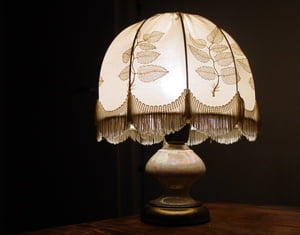How do you plan effective and beautiful lighting for your rooms? By following the three basic rules: Function, Mood and Harmony.
Function – Light the task areas and if more lighting is needed add more ambient lighting. First you need lighting in certain areas of the room for functions such as reading, playing games, writing, and so on. This is known as functional or task lighting. In addition to functional lighting you will need enough light to provide safe conditions; this is known as ambient lighting and it is the overall lighting covering the room. Both task lighting and ambient lighting are functional types of lighting.
Mood – Add lighting to decorative items and to any dark areas. You can achieve mood lighting in several ways. The first way is the general lighting in the room, dark is romantic, bright is uplifting. Secondly you can help create mood by the style of fixtures you choose, making sure they are suitable in mood and style. Lastly you may use accents of light to provide a dramatic touch to objects in the room. Lighting plants, statures, pictures and so on.
Harmony – Make sure to have a variety of light in different heights, direction of lighting and lamps. Harmony produces a unifying effect. Use unity but also use a variety of different types of lighting fixtures. Also keep with the proper style, an ornate gold candlestick lamp would greatly accentuate a room done with a Victorian mood and style.
Types of lamps:
In the design world we call the bulb a lamp, and what you would call a lamp a fixture.
Fluorescent Lamps – They produce cool light, they do not produce heat and last longer, less expensive and produce twice the amount of light. They produce unflattering light bluish yellow. It comes in a compact form now, no bigger than a regular bulb, they claim to produce warm white tones that closely duplicate incandescent light.
Incandescent Lamps – warm yellowish light which is appealing for the tones in our skin making them a more natural color, they also produce heat, and use more electricity. Use this type of light in most all spaces and rooms in homes. It’s your average light bulb.
Halogen Lamps – They are actually a type of incandescent lamp. They are usually expensive. Very bright light comes from them, use with dimmers.
Dining Rooms and Bedrooms
Let’s talk a little about task lighting and how it changes in rooms such as dining rooms and bedrooms. Lighting in the dining room is a bit obvious because you will usually place a chandelier directly over the center of the table. You may in your mind picture a chandelier as a huge crystal fixture but when I use this term I mean any fixture that hangs over the center of the dining table, be it a contemporary or a traditional chandelier. Besides the task lighting over the table you may also have a buffet cabinet or other piece that will need lighting. There are many ways to handles this, sconces on the sides of the piece, down lights, track lighting, or a wall washing light.
Next we would move onto mood lighting, mood lighting in a dining room needs to be subtle and at times elegant. Often wall washers that highlight artwork give it a very elegant feel The next step involves taking care of dark spots, corners with (light) cans, a torchiere, or dim recessed lighting.
Lighting in the bedroom is also a bit different. The task areas are usually near the dresser so you can see your clothing, near the mirror, the closet, and near the bedside and any chairs for reading. You could then place cans or wall washing lights for mood and variety.
Other Lighting Points:
To make a room feel larger, you will need to remove the shadows that have a tendency to break a room up into smaller spaces. Work on lighting the room with a soft, even light. Avoid ceiling lights as they tend to make the ceiling feel lower. Diffused ambient lighting will tend to enlarge the room.
Let me also warn about over lighting. If you over light a room you will have shadowing, pale color, and general washing out of the mood. Unless the mood is hospital emergency room you should avoid doing this.
Take into consideration the location of outlets, you can have them installed in the middle of a room into the floor if needed or run wires beneath carpeting.
Every room should have enough functional and secondary lighting. But I have seen a nice room change into a dramatic room with the addition of decorative lighting. Sometimes this could simply be illuminating art, or plants, or a sculpture. I have seen decorative lighting that is merely to set a mood. A dim lamp added to a corner adds light to a dark space and at the same time decorates it.






